The Birth of Cool: Hard-Edge Paintings by Karl Benjamin
Could a painting style capture the aesthetic of an entire era? Could it give form to the bouncy, cool optimism of post-bebop jazz music? Karl...
Julia Bourbois 25 September 2023
When tragedy or misfortune happens, some people turn to a greater power. The possibility of divine intervention gives them hope. Usually, these requests for help come with promises, an exchange as “payment” or a sign of gratitude. During Spanish rule, Mexicans adopted a creative way to thank the saints, the Virgin Mary, or holy figures for their assistance. They made so-called ex-votos. This ingenious, often moving, and sometimes even funny way of showing gratitude offers a window into the everyday life of common people in Mexico. Moreover, they are a testament to their faith and creativity. Today, these are considered folk art.
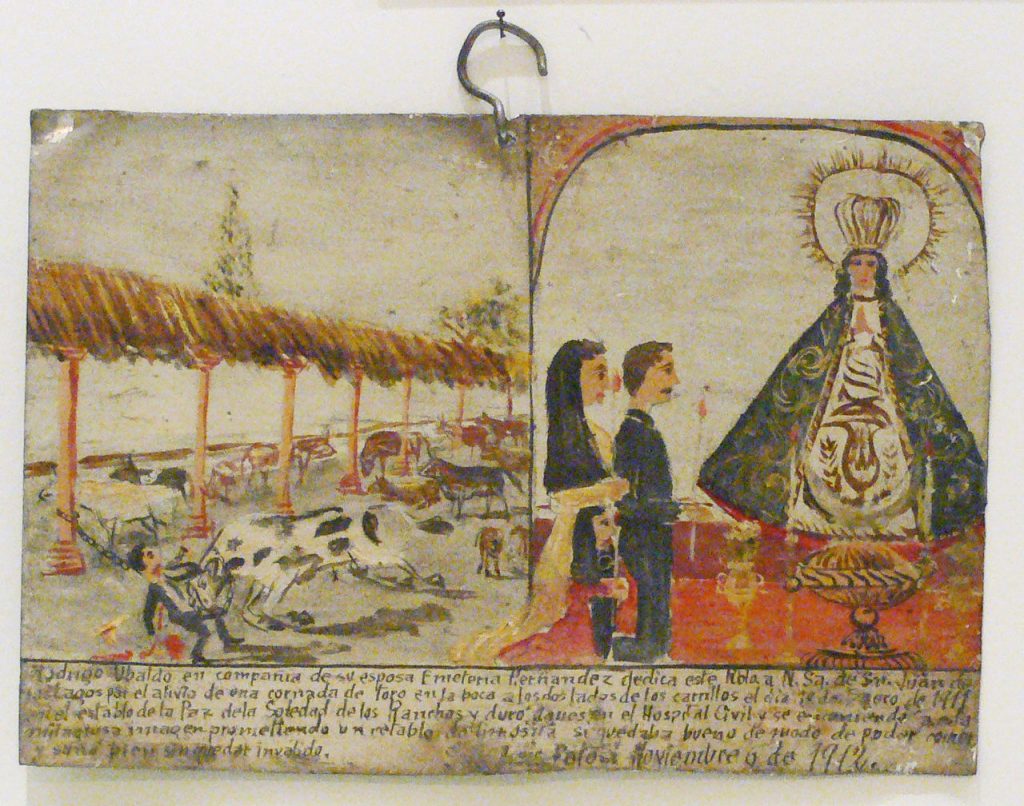
Votive painting for Our Lady of San Juan de los Lagos, 1912, Tropenmuseum, Amsterdam, Netherlands. Wikipedia Commmons.
The term ex-voto comes from the Latin referring to a vow or promise. It is an offering made to divinity to give thanks for the assistance. In Europe, this tradition started in 15th-century Italy. It then traveled to Mexico with the Spanish colonizers where it adopted a form of paintings on wood or metal sheets.
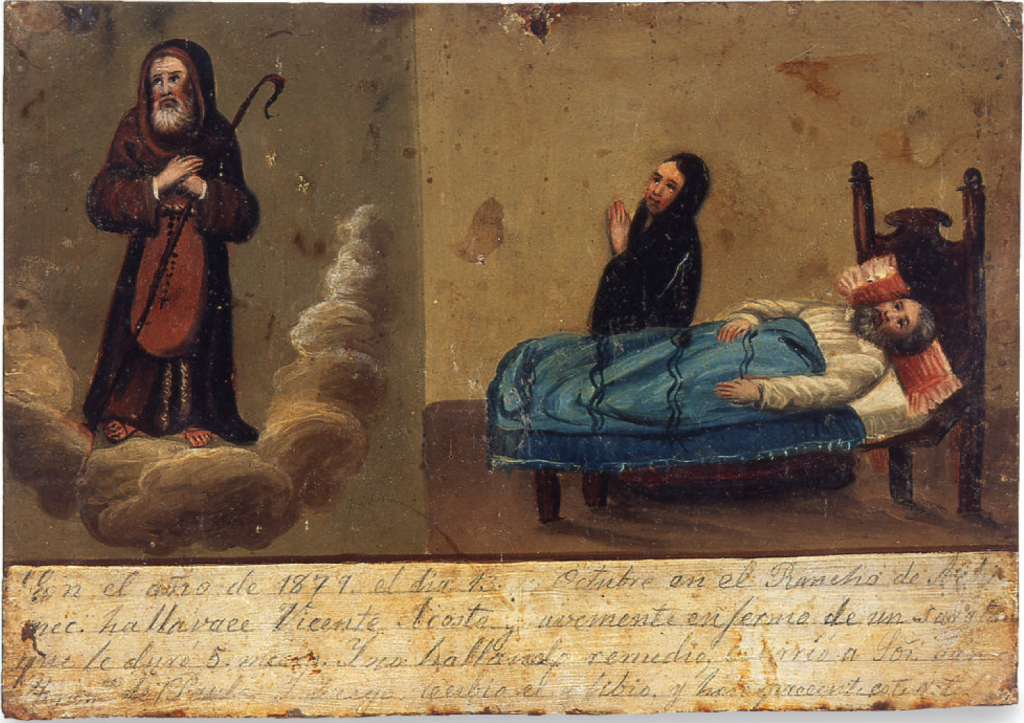
J. Gutiérrez, Ex-voto to Saint Francis of Paula, 1879, Museo Amparo, Puebla, Mexico.
Usually, the format consisted of a narrative illustration of an event, including a saint or Virgin Mary and the donor (the person who got aid and founded the ex-voto in an act of gratitude). Below, there was a brief description of the situation and how it was resolved. Later, people brought the ex-votos to a sanctuary or a church to offer them to the saints. Judging by the quality of some examples, sometimes they were made by local artists. Even though the tradition started in the upper classes, by the 18th century, it reached the rest of the population. Consequently, many ex-votos look less professional and are full of grammar mistakes. Many of them come from the western part of the country, from the region known as El Bajío.
Many ex-voto descriptions contain donors’ names and dates. This is particularly helpful for identification. Some of them even give a personal account of a historic event. For example, there is an ex-voto by Esteban Flores from September 29, 1864. He does thank the Virgen del Pueblito de Querétaro (Virgin of the Small Town of Querétaro) for saving his leg after a cannonball hit it when he participated in the famous Battle of Puebla, one of Mexico’s most celebrated victories, on May 5, 1863.
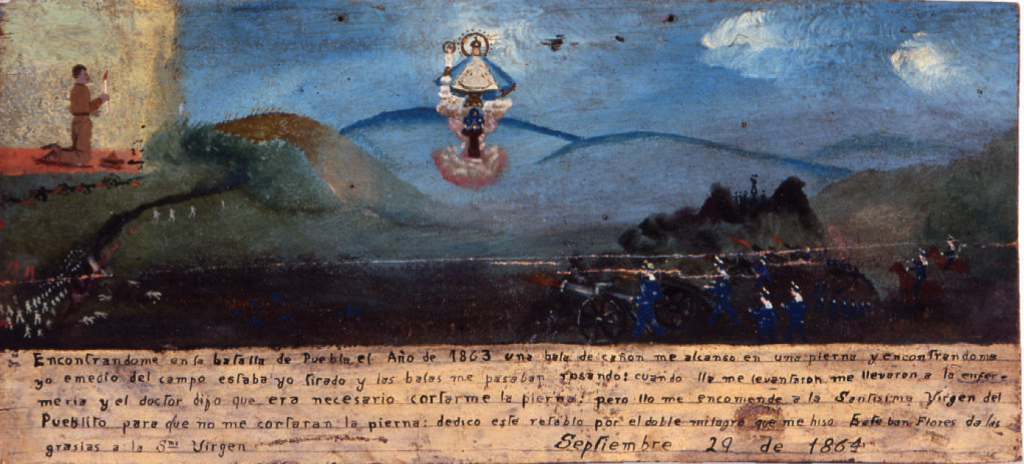
Altarpiece to Our Lady of the Small Town, 1864, Museo Amparo, Puebla, Puebla, Mexico.
Finding me in the battle of Puebla in the year 1863, a cannonball hit one leg and found me in the middle of the field I was lying there and the bullets passed me almost touching me, when they lift me, took me to the infirmary and the doctor said that they needed to cut my leg, but I entrust myself to Our Lady of the Small Town so that they wouldn’t cut my leg: I dedicate this altarpiece for the double miracle that she granted me. Esteban Flores gives thanks to the Holy Virgin.
September 29, 1864.Museo Amparo, Puebla, Puebla, Mexico.
The Revolution is another big event in Mexican history of the 20th century. In this next ex-voto, a mother thanks Saint Michael Archangel for taking care of her sons who fought with Emiliano Zapata, one of the principal Southern revolutionary leaders.
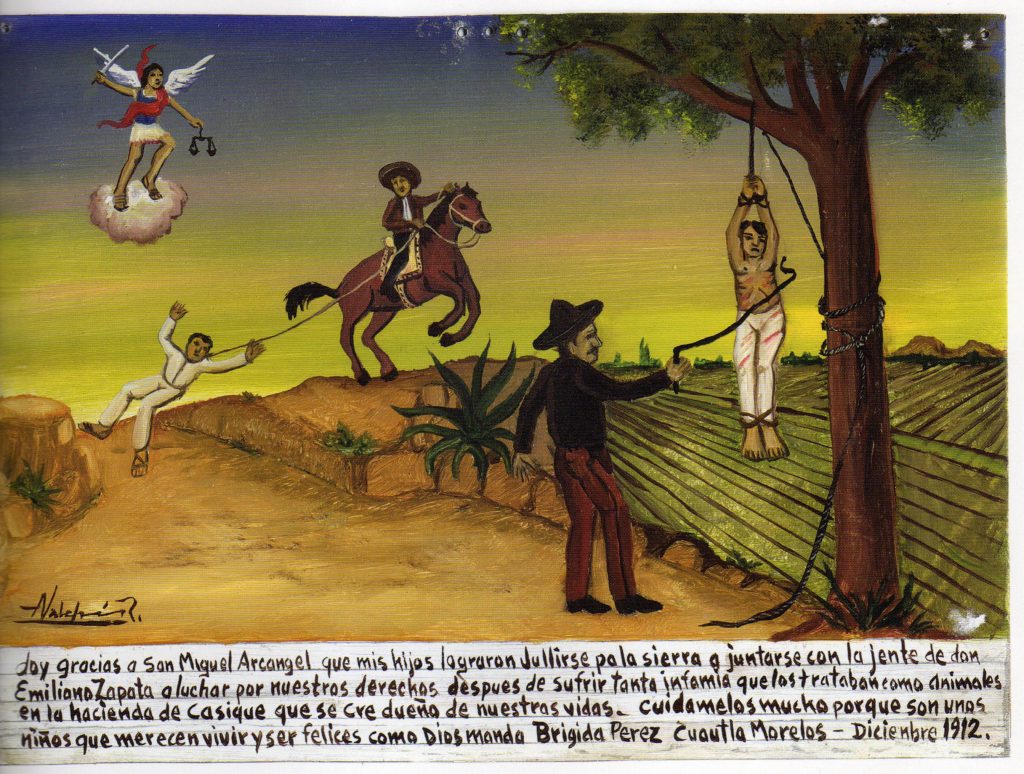
Ex-voto to Saint Michael Archangel, 1912, Museo Nacional de las Culturas, Mexico City, Mexico.
I give thanks to Saint Michael Archangel that my sons could flee to the mountains and get together with the people of Emiliano Zapata to fight for our rights after suffering so much infamy that treated them like animals in the ranch of the cacique that he believes to be the owner of our lives. Take care of them because they are boys that deserve to live and be happy as it’s God’s will. Brigida Perez Cuautla Morelos – December 1912
Our Lady of Guadalupe is one of the most important Catholic figures in Mexico. The virgin is believed to act as an intermediary between people and God and she is often asked to help with any difficulty. Therefore, many donors dedicated their ex-votos to her. Today, many of them belong to the collection of the Museum of the Basilica of Our Lady of Guadalupe. They are exhibited on the wall of the entrance hall.
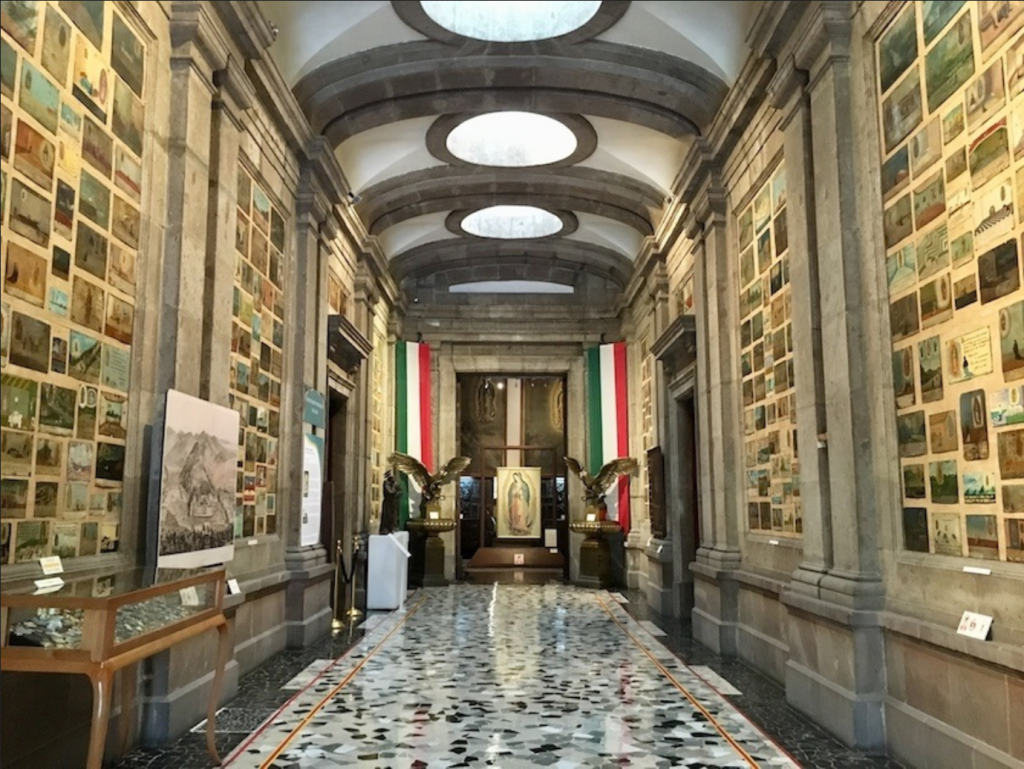
Entrance Hall of the Museum of the Basilica of Our Lady of Guadalupe with a rich collection of ex-votos, Mexico City, Mexico. Mexico Chulo.
The ex-voto below tells us about a miracle done to Antonia Carbajal’s son. Apparently, he lost control of the horse and could have hit the rocks. Thankfully, he entrusted himself to the Virgin, and she saved him. According to the description, she appeared right in front of him and stopped the horse.
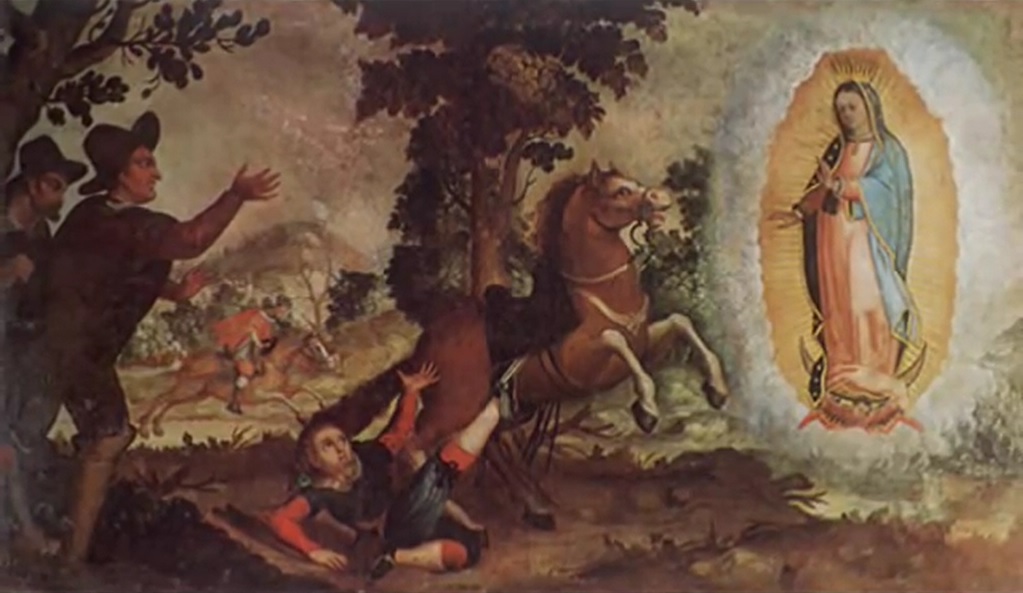
Ex-voto to Our Lady of Guadalupe, 18th century, Museum of the Basilica of Our Lady of Guadalupe, Mexico City, Mexico.
While many of the ex-votos deal with tragic events, there are others that are more lighthearted. Funny accidents or scary moments inform us of popular stories of the time concerning supernatural phenomena. For instance, the ex-voto in the picture below mentions the Archangel Gabriel saving a man from skeletons.
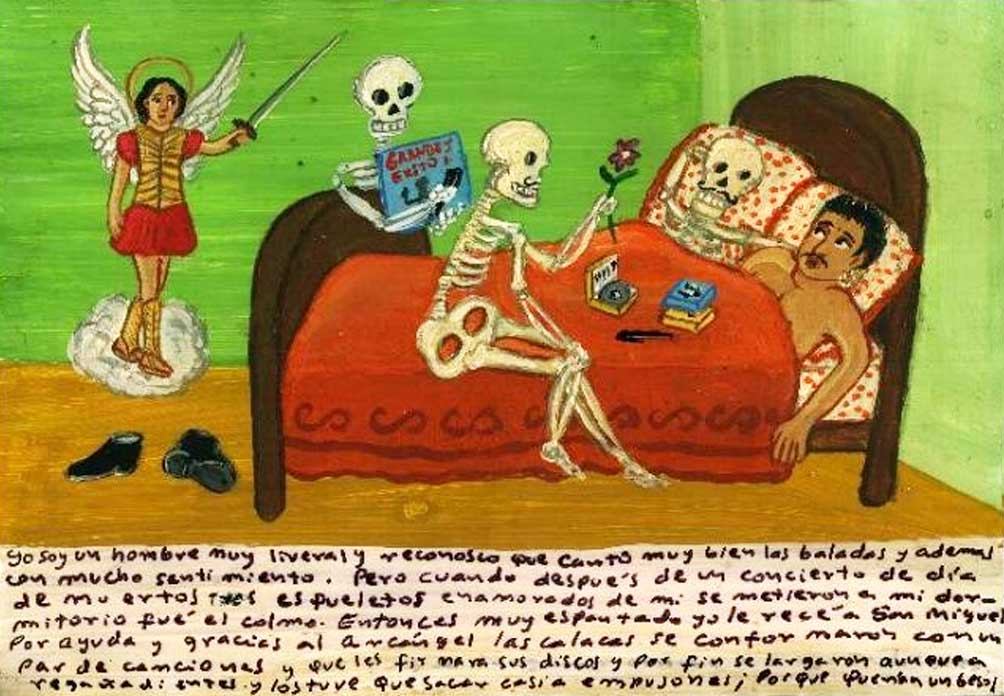
Ex-voto to Saint Michael. Univision.
Most of the ex-votos definitely belong to folk art. However, there are some works made by renowned artists that could be considered fine art. During the 20th century, artists turned to folk art as inspiration. One of them was Frida Kahlo. Unfortunately, her life was incredibly tumultuous and tragic. In 1925, when she was only 18 years old, she suffered an accident on a bus. This brought her pain and health problems for the rest of her life. But at least she survived against all odds. She made a sketch right after the accident and later, painted it.
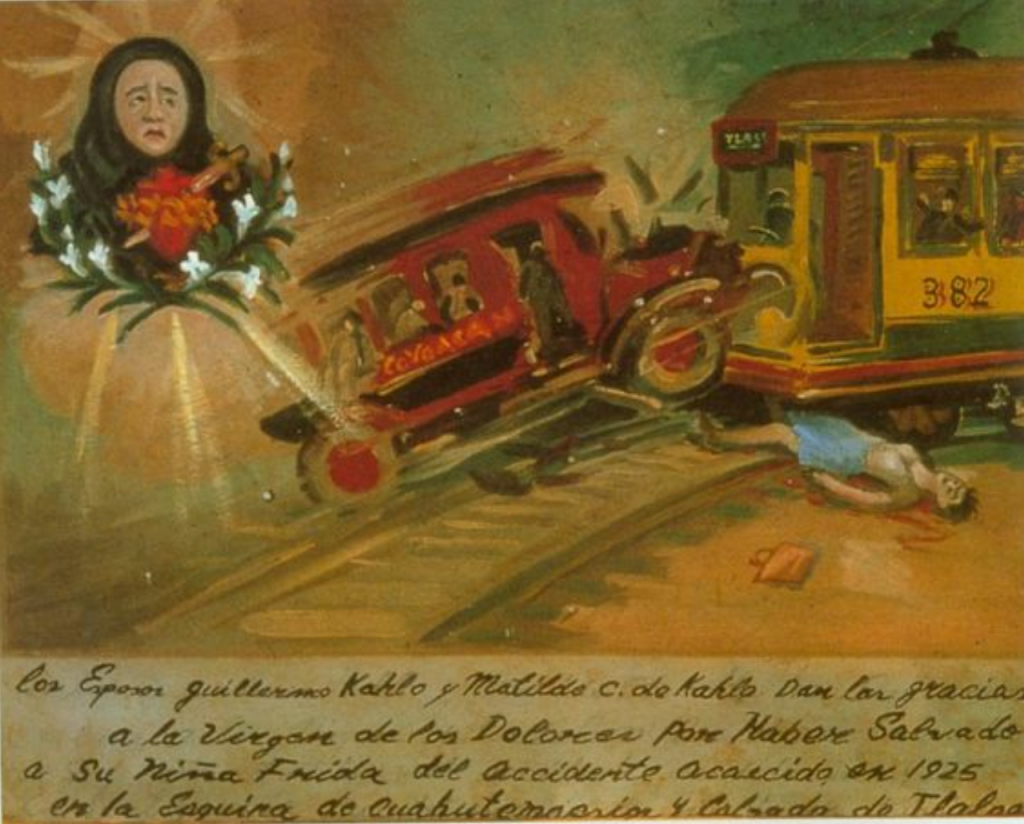
Frida Kahlo, Ex-voto to Our Lady of Sorrows, 1940. Pinterest.
The married couple Guillermo Kahlo and Martina of Kahlo give thanks to Our Lady of Sorrows for saving their daughter Frida from the accident in 1925 at the intersection of Cuauhtemoc and Tlalpan road.
But as no art is safe from traffickers, many pieces were robbed. Since the 1960s and 1970s, hundreds of ex-votos were illegally removed from churches and sanctuaries and traffickers took them to Italy in 2018. Once Mexican experts identified the pieces, they asked for their repatriation. Thankfully, as part of the 1970 UNESCO Convention (on the Means of Prohibiting and Preventing the Illicit Import, Export and Transfer of Ownership of Cultural Property) and bilateral cooperation, the Italian government returned them in 2019. In total, they recovered 596 ex-votos for which Mexico expressed its utmost gratitude to the Italian government. The return of these pieces is a huge win for Mexico and for the fight against the illicit trafficking of artworks. But it also brought a new wave of interest in the pieces.

Ex-voto to Our Lady of San Juan de los Lagos, 1938, MXCITY GUÍA INSIDER.
Largely, ex-votos are rather a historic form of art. However, there are still some people who maintain the tradition. Ex-votos had their revival during the Covid-19 pandemic. People started to create them again as a thanksgiving after the recovery of a loved one and for those who helped during the health crisis. For example, this one thanks Genesius of Rome, the saint patron of the clowns, for their participation in a campaign to spread masks and hand sanitizer.
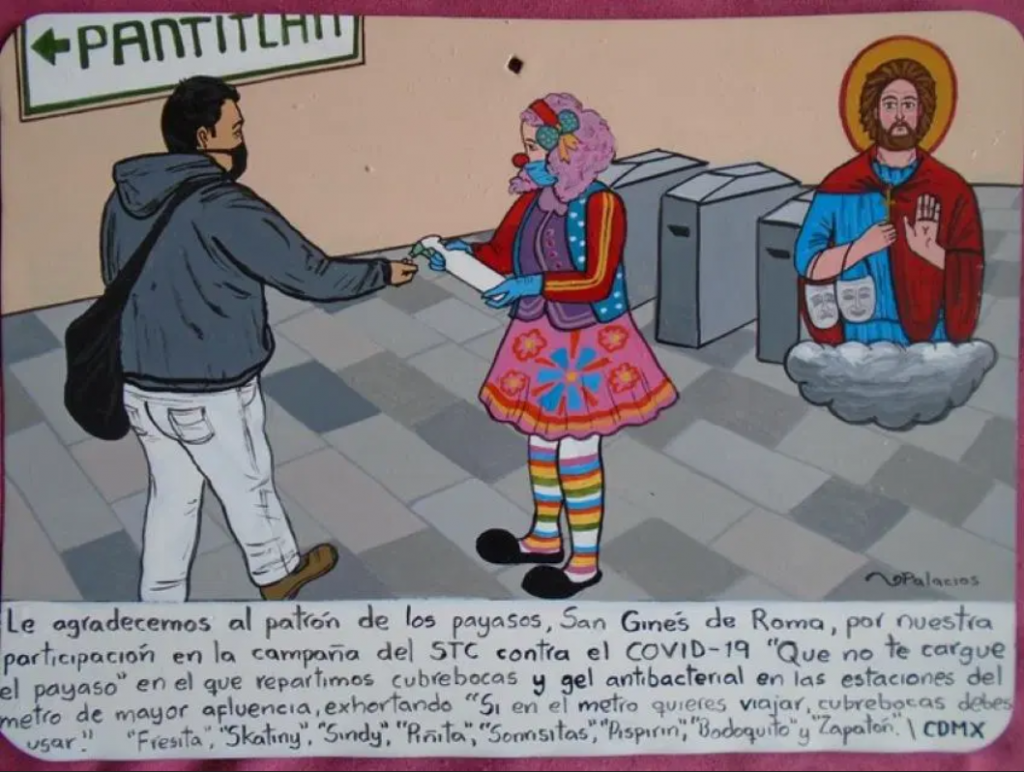
Ex-voto to Saint Genesius of Rome, 2020. Mexico News Daily.
Thanks to this, we can see that ex-votos still live in people’s memory. Certainly, they are an important part of their faith and artistic production, as well as an interesting cultural and artistic heritage of Mexico.
Clara Bargellini: Testimonios de fe: Colección de Exvotos del Museo Amparo, Museo Amparo, Puebla, Mexico, 2018.
“Italian government returns 596 Catholic ex-votos to Mexico.” El Universal, March 6, 2019.
Inmaculada Pertusa: “From The Visual to The Minitextual in The Pictorial Votive Offerings in Mexico: A Proposal For a New Subgenre of Minifiction, (in Microtextualidades Revista Internacional de microrrelato y minificción), 2019, Dialnet.
DailyArt Magazine needs your support. Every contribution, however big or small, is very valuable for our future. Thanks to it, we will be able to sustain and grow the Magazine. Thank you for your help!